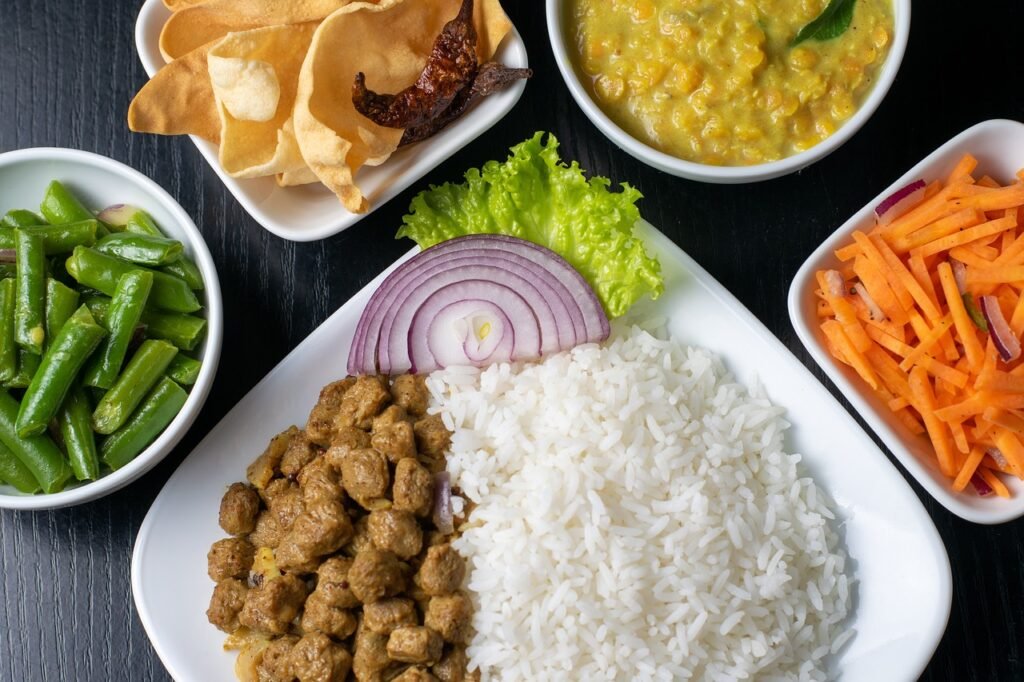Dal Bhat Tarkari, often referred to as the heart of Nepali cuisine, holds a significant place in the culinary landscape of Nepal. This traditional meal, comprising lentils, rice, and vegetable curry, not only serves as a source of sustenance but also embodies the rich cultural heritage of the Nepali people.
Origins of Dal Bhat Tarkari
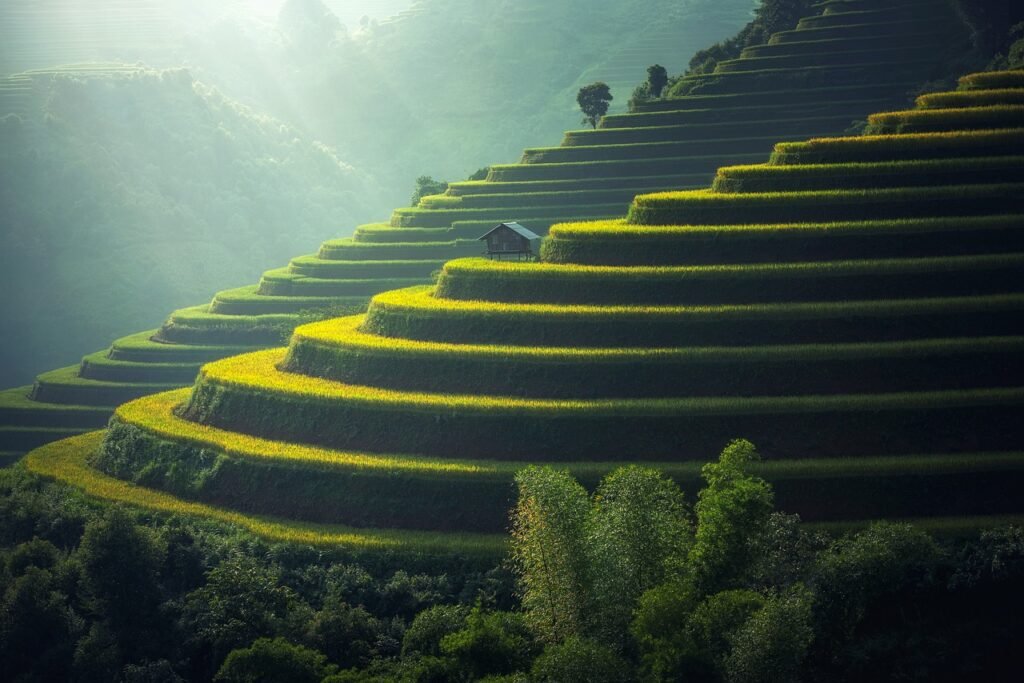
The origins of Dal Bhat Tarkari date back centuries in Nepali history, tracing its roots to the humble kitchens of farmers and villagers in rural Nepal. It’s a dish steeped in tradition and history, believed to have been born out of necessity as a simple yet nourishing meal to sustain hardworking individuals tending to the land.
In those early days, ingredients were sourced directly from the fields and local markets, with lentils, rice, and seasonal vegetables forming the cornerstone of the dish. As generations passed, the recipe evolved, incorporating new flavors and techniques while staying true to its rustic origins. Today, Dal Bhat Tarkari remains
Ingredients of Dal Bhat Tarkari
Dal (Lentils)
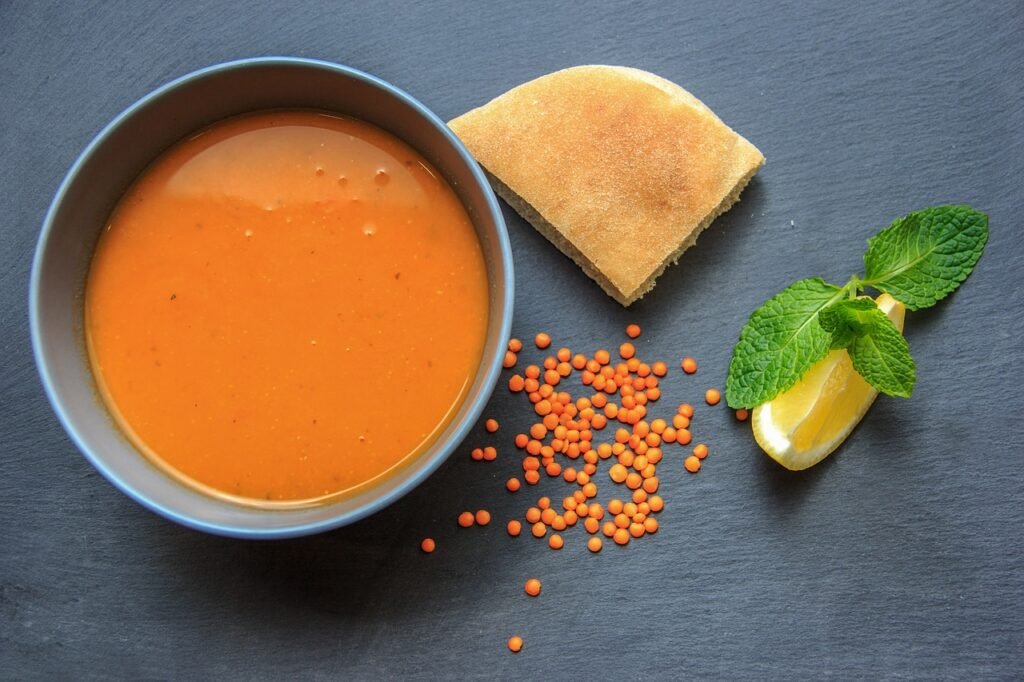
Lentils, a staple ingredient of Dal Bhat Tarkari, provide a rich source of protein and essential nutrients. Common varieties include red lentils, black lentils, and yellow lentils, each lending its unique flavor to the dish.
For example, Masoor dal, also known as red lentils, is widely consumed in Nepal, often in combination with Rahar ko dal (split pigeon peas). Therefore, we’ll use Masoor dal as an example for the rest of the article.
Bhat (Rice)
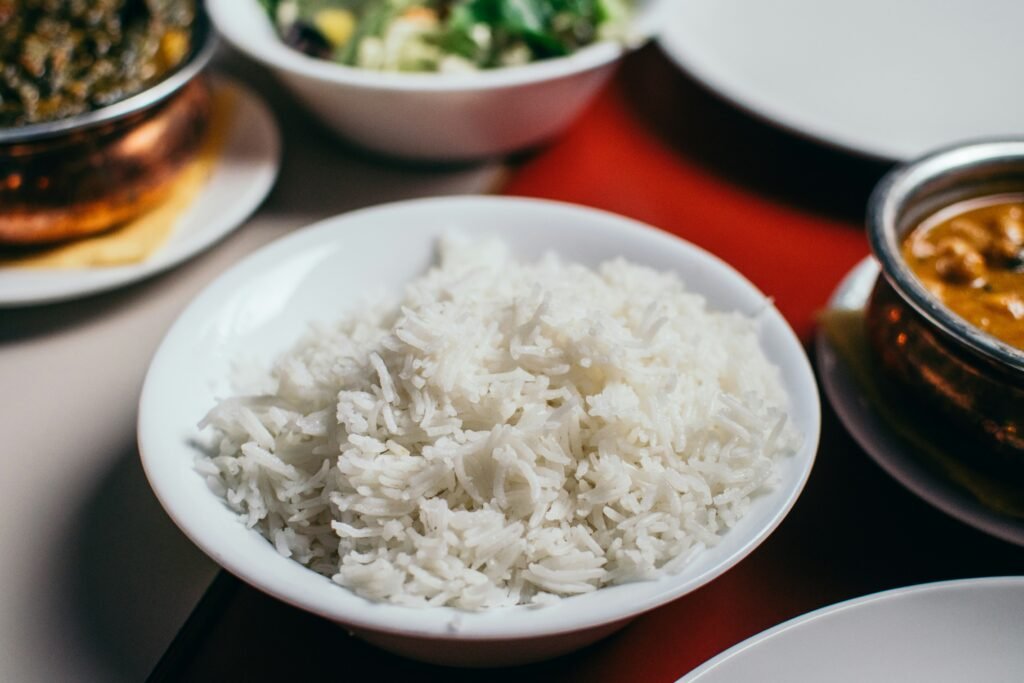
Rice serves as the primary carbohydrate component of Dal Bhat Tarkari. In Nepal, various types of rice, such as Basmati and Jasmine, are used depending on regional preferences.
Basmati rice, renowned for its aromatic fragrance and long grains, is often the preferred choice for enhancing the overall taste and experience of Dal Bhat Tarkari. Its distinct aroma and texture elevate the dish, making it a delightful culinary experience. Therefore, for the remainder of the article, we’ll use Basmati rice as an example to illustrate the traditional preparation and nutritional aspects of Dal Bhat Tarkari.
Tarkari (Vegetable Curry)
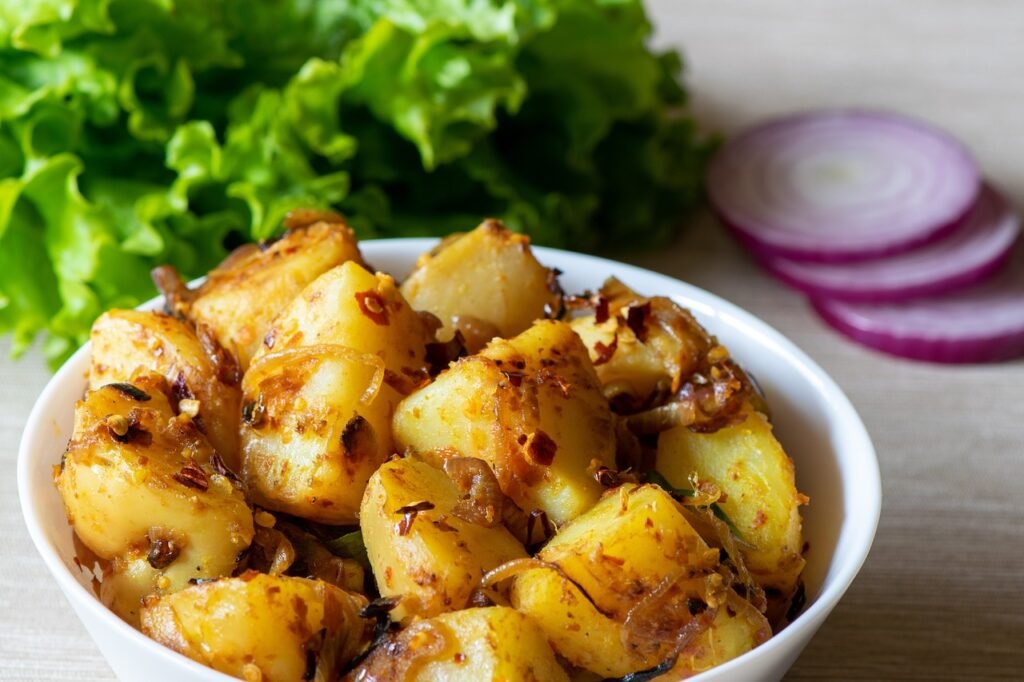
The vegetable curry, or Tarkari, adds flavor and nutritional diversity to the meal. It typically includes a variety of seasonal vegetables, spices, and herbs, cooked to perfection.
One of the most widely used Tarkaris in Nepal is aalu ko tarkari (potato curry) due to its easy availability and delicious taste. Potatoes are versatile and commonly found in Nepali households, making aalu ko tarkari a popular choice to accompany dishes like Dal Bhat Tarkari. For the purpose of illustrating nutritional values, we’ll use Basmati rice as an example for the rest of the article.
Nutritional Value
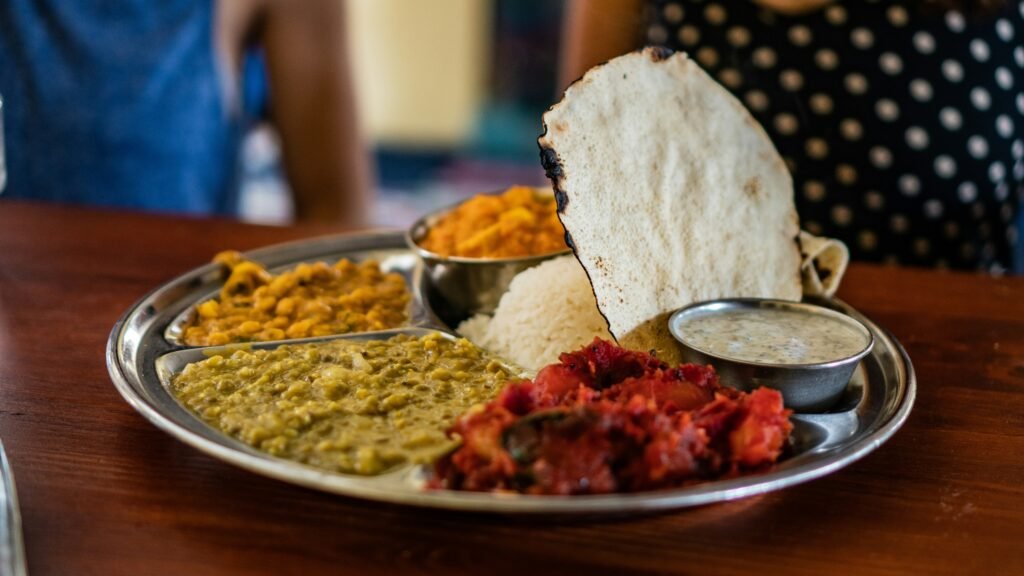
1. The nutritional value of 100 grams of Masoor dal (red lentils) typically includes:
- Calories: Approximately 350 calories
- Carbohydrates: Around 60 grams
- Protein: About 25 grams
- Fat: Approximately 1.5 grams
- Fiber: Roughly 5 grams
- Vitamins and Minerals:
- Iron: 7 milligrams
- Calcium: 50 milligrams
- Vitamin B6: 0.4 milligrams
- Magnesium: 50 milligrams
- Potassium: 800 milligrams
2. The nutritional value of 100 grams of Basmati rice typically includes:
- Calories: Approximately 150 calories
- Carbohydrates: Around 35 grams
- Protein: About 3 grams
- Fat: Less than 1 gram
- Fiber: Roughly 1 gram
- Vitamins and Minerals:
- Iron: 0.5 milligrams
- Calcium: 10 milligrams
- Vitamin B6: 0.1 milligrams
- Magnesium: 20 milligrams
- Potassium: 50 milligrams
3. The nutritional value of 100 grams of Aalu ko tarkari (potato fry) typically includes:
- Calories: Around 80-100 calories
- Carbohydrates: Approximately 20 grams
- Protein: About 2 grams
- Fat: Less than 1 gram
- Fiber: Roughly 2 grams
- Vitamins and Minerals:
- Vitamin C
- Potassium
- Vitamin B6
- Magnesium
- Iron
Please note that these values are approximate and may vary slightly depending on factors such as cooking method and specific variety of Basmati rice, type of dal and potato.
Health Benefits of Dal Bhat Tarkari
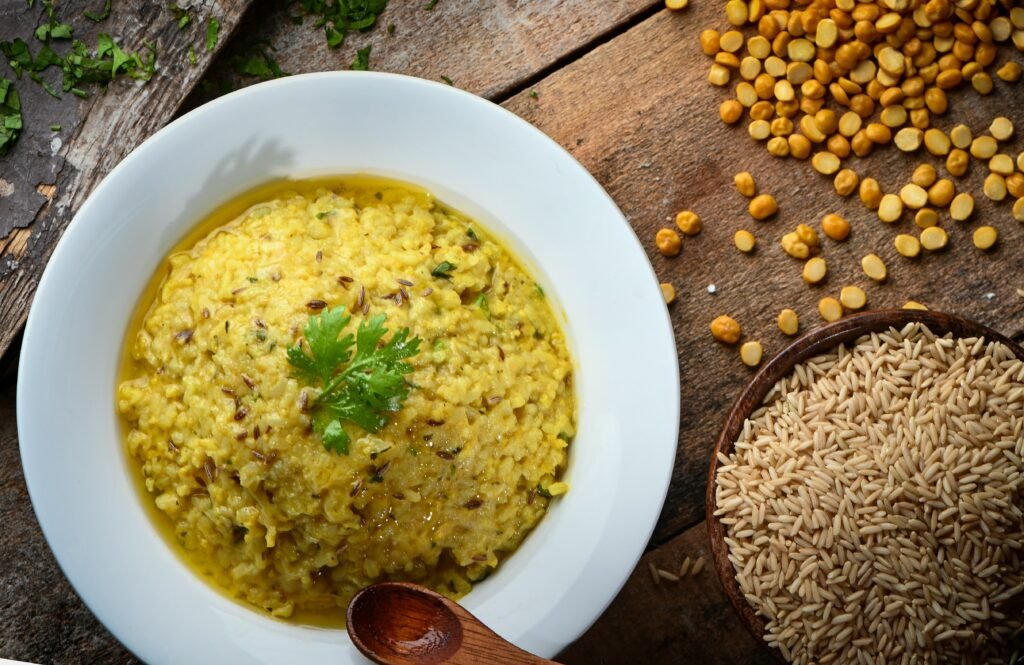
Dal Bhat Tarkari offers a balanced combination of carbohydrates, proteins, vitamins, and minerals, making it a wholesome and nutritious meal. It provides sustained energy and promotes overall well-being.
The combination of lentils, rice, and vegetables in Dal Bhat Tarkari ensures a well-balanced diet, meeting the dietary requirements of individuals across all age groups.
Recipes and Variations

Step-by-Step Recipe for Dal Bhat Tarkari
- Wash and soak lentils for a few hours.
- Cook lentils with water, salt, and turmeric until soft.
- In a separate pot, cook rice until fluffy and tender.
- Prepare vegetable curry by sautéing onions, garlic, and spices.
- Add chopped vegetables and cook until tender.
- Serve hot Dal Bhat Tarkari with a side of pickle or yogurt.
Variations and Adaptations
- Add meat or fish to enhance protein content.
- Experiment with different spices and herbs for unique flavor profiles.
- Substitute rice with other grains like millet or quinoa for a healthier twist.
Preparation and Cooking Methods
Traditional Cooking Techniques
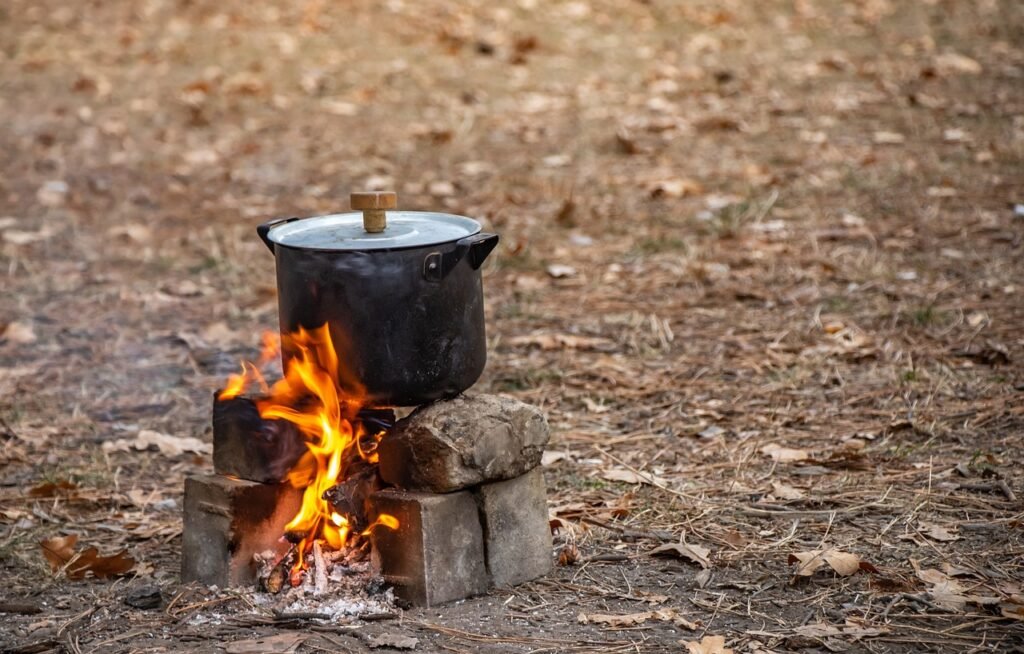
Traditionally, Dal Bhat Tarkari is prepared using simple cooking techniques, including boiling, steaming, and sautéing. The slow cooking process allows the flavors to blend harmoniously, resulting in a delicious and aromatic meal.
In Nepal, people have historically prepared these dishes using traditional cooking methods, often utilizing a mud gas stove called ‘mato ko chulo.’ This stove is constructed from mud and features a cavity where wood branches are burned to generate heat. Cooking utensils, typically made of iron, are placed over the fire, and the meal is often served in copper plates. These traditional cooking practices not only impart a unique flavor to the food but also hold cultural significance, reflecting the rich culinary heritage of Nepal.”
Modern Adaptations

With the advent of modern kitchen appliances and culinary innovations, there are now various contemporary adaptations of Dal Bhat Tarkari, catering to diverse tastes and preferences.
Nowadays, people often rely on LPG gas cylinders for cooking instead of traditional mud gas stoves. Additionally, the practice of serving meals in ceramic or aluminum plates has become more common, reflecting a shift towards modernization. However, this trend raises concerns about the potential loss of cultural heritage, as traditional practices such as cooking in mud gas stoves and serving in copper plates are gradually being replaced. While embracing modern conveniences, it’s essential to preserve and cherish our cultural roots to maintain a connection to our heritage.
Regional Variations
Different Versions Across Nepal
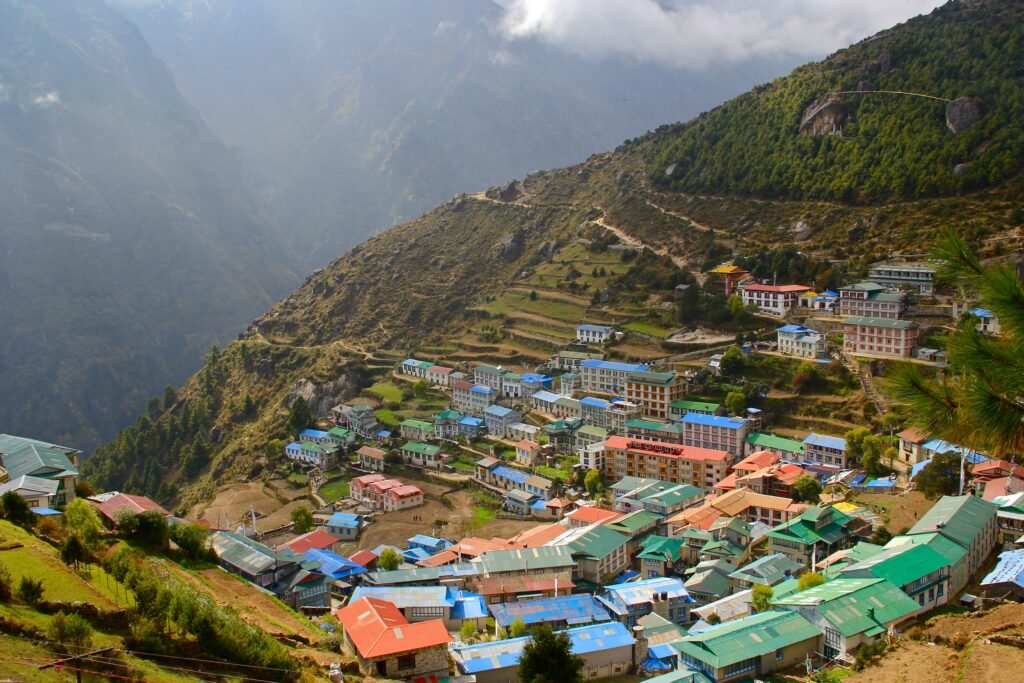
While the basic components of Dal Bhat Tarkari remain consistent, the preparation methods, spices used, and regional preferences vary significantly across different parts of Nepal.
In the mountainous regions of the Himalayas, where access to fresh vegetables is limited, Dal Bhat Tarkari often features preserved or dried vegetables like radish, spinach, and potatoes. The harsh terrain and cold climate influence the choice of ingredients and cooking techniques, with hearty, warming spices such as cloves, cinnamon, and cardamom being prominent in these regions.
Conversely, in the fertile plains of the Terai region, where agriculture thrives, Dal Bhat Tarkari boasts an abundance of fresh produce, including tomatoes, eggplants, and leafy greens. The cuisine here tends to be spicier, with liberal use of chili peppers and mustard oil in cooking. Additionally, influences from neighboring Indian cuisine can be observed, with dishes like aalu ko tarkari (potato curry) and gobi ko tarkari (cauliflower curry) making frequent appearances on the dining table.
Dal Bhat Tarkari in Everyday Life
In Nepali households, Dal Bhat Tarkari holds a sacred place as more than just a meal; it’s a cultural institution deeply ingrained in the fabric of everyday life. From bustling urban centers to remote mountain villages, the aroma of simmering lentils and spices wafts through kitchens, signaling the preparation of this beloved dish. Its simplicity and nourishing qualities make it a go-to option for families seeking sustenance and comfort after a long day’s work.
Beyond its nutritional value, the act of sharing Dal Bhat Tarkari transcends mere sustenance; it’s a ritual that fosters bonds of kinship and solidarity. Whether it’s a humble meal shared amongst family members gathered around the dining table or a communal feast celebrating a joyous occasion, the act of breaking bread together strengthens the ties that bind communities. Through laughter, stories, and shared moments of gratitude, Dal Bhat Tarkari becomes more than just food—it becomes a symbol of togetherness and unity in a world often marked by division and strife.
Tourism and Culinary Exploration
Dal Bhat Tarkari is not only cherished by locals but also serves as a culinary attraction for tourists visiting Nepal. Many visitors seek to experience the authentic flavors and cultural heritage associated with this traditional dish.
Exploring the diverse culinary landscape of Nepal offers travelers the opportunity to taste a wide range of regional delicacies, including Dal Bhat Tarkari, while immersing themselves in the country’s vibrant culture and traditions.
Health and Sustainability
Dal Bhat Tarkari embodies more than just a delicious meal; it represents a commitment to sustainable living and environmental stewardship. By utilizing locally sourced ingredients and embracing traditional farming methods, communities across Nepal are not only preserving their cultural heritage but also safeguarding the delicate balance of ecosystems. Small-scale farmers, often overlooked in the industrialized food system, play a crucial role in this sustainable approach, cultivating diverse crops using age-old techniques that minimize the use of chemical inputs and promote biodiversity.
Furthermore, the emphasis on locally sourced ingredients reduces the carbon footprint associated with transportation and distribution, ensuring that each plate of Dal Bhat Tarkari comes with a smaller environmental impact. From the fields where the lentils are gently nurtured to the kitchens where spices are lovingly ground, every step in the process reflects a commitment to harmony with nature. In a world grappling with the consequences of climate change and environmental degradation, Dal Bhat Tarkari serves as a beacon of hope—a reminder that sustainability is not just a buzzword but a way of life rooted in respect for the land and its bounty.
Challenges and Future Outlook
In the face of modernization and globalization, traditional culinary practices like Dal Bhat Tarkari are at risk of fading into obscurity amidst the allure of fast food chains and convenience meals. As globalized diets increasingly encroach upon local food cultures, there’s a danger of losing not just the flavors and textures of traditional dishes but also the stories and traditions woven into their preparation. This shift not only threatens the rich tapestry of culinary heritage but also undermines the diversity of dietary options available to communities.
Efforts to preserve and promote the cultural heritage associated with Dal Bhat Tarkari are crucial in safeguarding Nepal’s culinary traditions for future generations. By celebrating the rituals of gathering ingredients, preparing meals, and sharing stories around the dinner table, communities can ensure that the essence of Dal Bhat Tarkari endures as more than just a dish—it becomes a symbol of resilience and identity in the face of cultural homogenization. Through educational initiatives, culinary workshops, and grassroots movements, Nepali communities can reclaim ownership of their food culture and reaffirm the intrinsic value of traditional practices in a rapidly changing world.
Conclusion
In conclusion, Dal Bhat Tarkari embodies the essence of Nepali culture, tradition, and culinary excellence. As a staple food in Nepal, it not only nourishes the body but also nurtures the soul, fostering a sense of belonging and unity among its people.
I highly encourage you to experience the delight of Dal Bhat Tarkari firsthand, whether by preparing it at home or seeking it out at authentic Nepali restaurants. Trust me, it’s not just a delicious and nutritious meal—it’s a soul-warming journey into the heart of Nepali cuisine.
And if you’re interested in exploring a holistic approach to nutrition, I invite you to check out our holistic nutrition category. Dive into the world of wholesome foods and mindful eating practices to nourish not just your body, but your mind and spirit as well. Embrace the transformative power of holistic nutrition and embark on a journey towards vibrant health and well-being. It’s a journey worth taking, I promise!
FAQs
- What makes Dal Bhat Tarkari a staple food in Nepal?
Dal Bhat Tarkari provides a balanced combination of nutrients, cultural significance, and widespread availability, making it an indispensable part of Nepali cuisine. - Can Dal Bhat Tarkari be made vegetarian or vegan?
Yes, Dal Bhat Tarkari can be easily adapted to vegetarian or vegan diets by omitting any animal products and focusing on plant-based ingredients. - Is Dal Bhat Tarkari spicy?
The level of spiciness in Dal Bhat Tarkari can vary depending on individual preferences and regional variations. It can range from mild to fiery hot, catering to diverse tastes. - How does Dal Bhat Tarkari contribute to the Nepali economy?
Dal Bhat Tarkari supports various sectors of the Nepali economy, including agriculture, tourism, and food services, creating employment opportunities and driving economic growth. - Are there any cultural rituals associated with Dal Bhat Tarkari?
Yes, Dal Bhat Tarkari is often served with ceremonial significance during religious festivals, weddings, and other special occasions, symbolizing abundance, prosperity, and hospitality.
Get Access Now: https://bit.ly/J_Umma
Please Click the Like Button to rate your experience!

